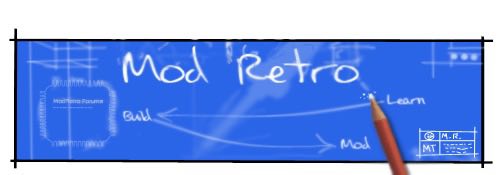StaticStorm
Newb
Many of you may have run into problems with cheap chinese LCD displays running very hot to the touch, and using a LOT more power than you expected. (particularly if you use something driven by a pcb800099)
I have found the root cause, and the solution.
LEDs should NOT be driven directly with voltage, you must current limit them as well, most chinese driver boards do not include the correct current limiting resistor. (the resistor should be in series with the backlight)
For example the ZJ050NA-08C screen (my screen of choice) calls for 15V to power the backlight, and the data sheet says it should draw 60mA of current. However if you supply 15v directly to the pins, it will draw a whopping 220mA of current and become very hot! The provided driver PCB only uses a 1 Ohm current limiting resistor, meaning the board + screen drew 4.8 watts of power! By using the correct 10 ohm resistor, I dropped this down to 1.3 watts, with minimal loss of brightness, drastic power consumption reduction, and I don't burn myself when I touch the screen anymore.
Calculating your particular resistance for your screen is a bit complicated, but basically the (heavily simplified) formula is (supply voltage measured at the screen - minimum voltage that the LEDs will turn on for) / target current.
For me this was (15v-14.3V)/60mA = 11.6 Ohms. But you can also experiment.
This does require kind of knowing what you are doing (and being able to identify the resistor on the board), but if there is interest, ill do a guide on how to do it for common boards.
I have found the root cause, and the solution.
LEDs should NOT be driven directly with voltage, you must current limit them as well, most chinese driver boards do not include the correct current limiting resistor. (the resistor should be in series with the backlight)
For example the ZJ050NA-08C screen (my screen of choice) calls for 15V to power the backlight, and the data sheet says it should draw 60mA of current. However if you supply 15v directly to the pins, it will draw a whopping 220mA of current and become very hot! The provided driver PCB only uses a 1 Ohm current limiting resistor, meaning the board + screen drew 4.8 watts of power! By using the correct 10 ohm resistor, I dropped this down to 1.3 watts, with minimal loss of brightness, drastic power consumption reduction, and I don't burn myself when I touch the screen anymore.
Calculating your particular resistance for your screen is a bit complicated, but basically the (heavily simplified) formula is (supply voltage measured at the screen - minimum voltage that the LEDs will turn on for) / target current.
For me this was (15v-14.3V)/60mA = 11.6 Ohms. But you can also experiment.
This does require kind of knowing what you are doing (and being able to identify the resistor on the board), but if there is interest, ill do a guide on how to do it for common boards.
